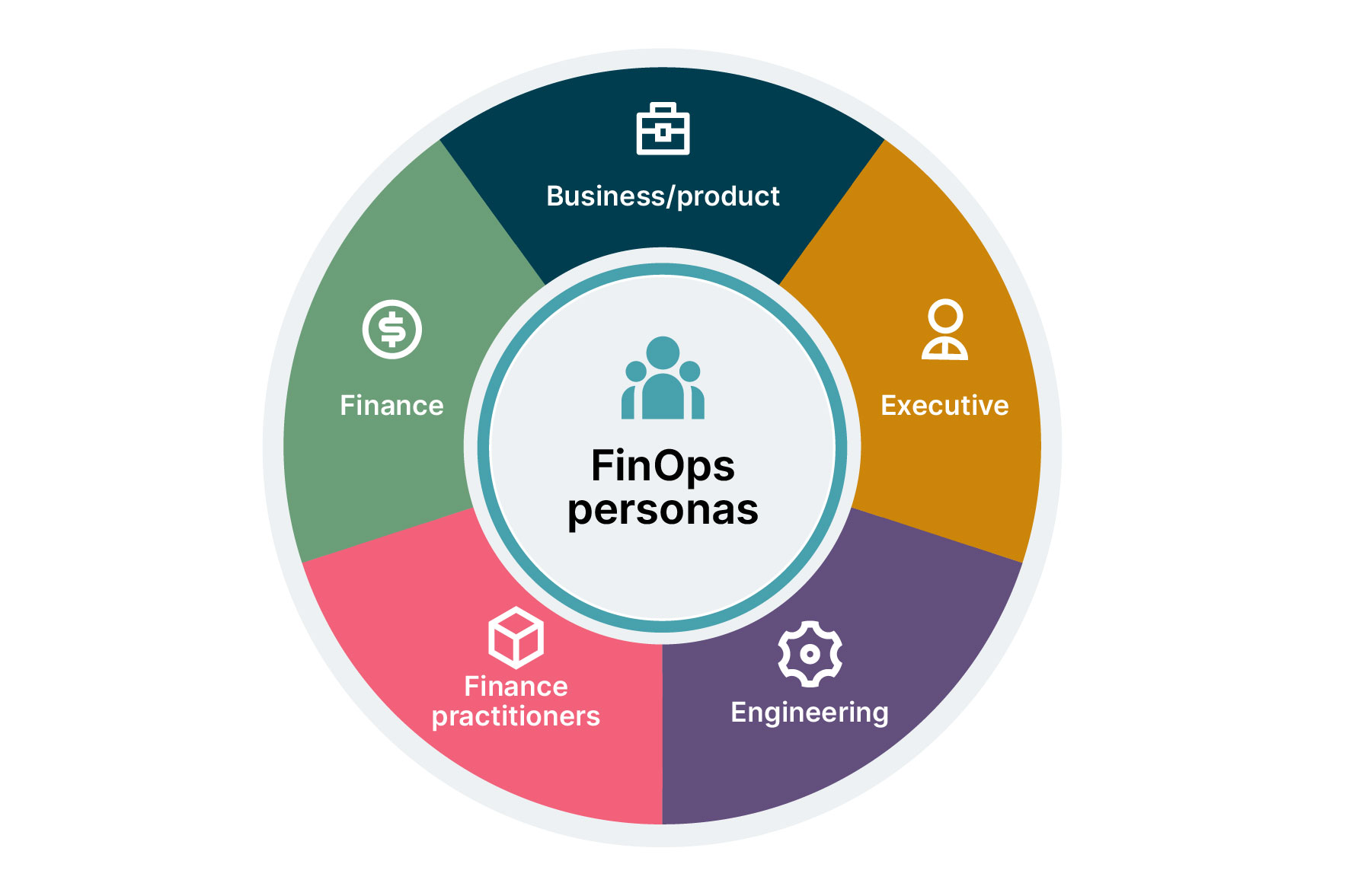Cloud cost management and FinOps are terms often used interchangeably, but there are some key differences between them.
What is cloud cost management?
Cloud cost management is the process of tracking, optimizing and managing cloud computing costs. It involves identifying and eliminating unnecessary cloud resources, right-sizing resources and optimizing cloud use.
What is FinOps?
According to finops.org, FinOps is an evolving cloud financial management discipline and cultural practice. It enables organizations to get maximum business value by helping engineering, finance and business teams to collaborate on data-driven spending decisions.


In FinOps, personas from different backgrounds like Engineering, Finance, Business and executives come together to form a central team whose goal is to optimize the cloud costs. FinOps teams understand that cloud spend is not just about reducing costs but ensuring that cloud resources are used to support the organization's business goals.
Why should we not use them interchangeably?
Cloud Cost Optimization narrows its focus on reducing expenses. In contrast, FinOps casts a broader net, encompassing not only cost optimization but also financial management aspects like budgeting, forecasting, and insightful reporting. While starting with cost optimization is a prudent step, embracing FinOps offers a comprehensive and enduring approach. Yet, confusion often arises as these terms are used interchangeably, leading organizations to believe they are practicing FinOps when deeper optimization opportunities remain unexplored.
Let’s look at the five key differences between cloud cost management and FinOps:
Scope
Cloud cost management primarily focuses on the technical elements of cloud expenditure, encompassing tasks like resource tagging for cost tracking and management, resource right-sizing, and identification and termination of unused resources.
In contrast, FinOps adopts a more comprehensive approach to cloud financial management. It encompasses not only the technical aspects of cloud spend but the business and operational aspects as well. For instance, FinOps teams collaborate with business stakeholders to understand resource utilization and identify opportunities to optimize cloud expenditure while preserving business agility. It is also used to develop and implement policies and procedures for cloud cost optimization and automate cloud cost management, including monitoring, forecasting, and governance. Essentially, cloud cost management addresses the "how" of financial management, while FinOps focuses on the "why" and the "what."
Goals


Cloud cost management is about reducing cloud spend, while FinOps is about optimizing cloud spend to align with business goals.
Cloud cost management focuses on identifying and eliminating unnecessary cloud resources, while FinOps also considers how cloud resources can be used to improve business agility and reduce time to market.
In short, cloud cost management is about saving money, while FinOps is about saving money and improving business performance.
Approach


Cloud cost management is reactive, while FinOps is proactive.
Cloud cost management teams react to cost issues after they occur, while FinOps teams prevent cost issues from occurring in the first place.
For example, a cloud cost management team might investigate a sudden increase in cloud bill, while a FinOps team might implement a cloud cost management tool to automatically alert the team when cloud spend is approaching a certain threshold.
Culture


Cloud cost management is typically a siloed approach, i.e., the responsibility for cloud cost management lies with a single team or department. For example, the IT department might be responsible for managing cloud costs, while the finance department approves cloud spending. This can lead to a situation where different teams are working at cross-purposes without a clear understanding of how cloud costs are impacting the organization as a whole.
FinOps, on the other hand, is a collaborative approach meaning all stakeholders in the organization are involved in cloud cost management. This includes teams like engineering, operations and finance. Working together, these teams can identify and implement cost-saving measures aligned with the organization's business goals.
The key cultural difference: FinOps takes a collaborative approach making sure that everyone collectively owns cost management.
Metrics
Cloud cost management, typically, focuses on financial metrics such as total cloud spend and cost per unit of output. This is because the goal of cloud cost management is to reduce cloud spend. However, focusing solely on financial metrics can lead to organizations making decisions that negatively impact their business agility.
FinOps, on the other hand, also considers non-financial metrics such as user satisfaction and business agility. This is because FinOps teams understand that cloud spend is not just about reducing costs but ensuring that cloud resources are used to support the organization's business goals. For example, a FinOps team might recommend that an organization invest in a more expensive cloud service that would improve the performance of their applications. This would increase cloud costs, but it would improve user satisfaction and business agility.
In conclusion, cloud cost management and FinOps are two key approaches to cloud financial management. Cloud cost management is a good starting point for organizations new to cloud computing. However, FinOp s is a more comprehensive approach that can help organizations optimize cloud spend in a way that aligns with their business goals.
Disclaimer: The statements and opinions expressed in this article are those of the author(s) and do not necessarily reflect the positions of Thoughtworks.


















